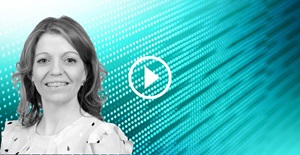Is unconscious bias training a waste of time? As employers strive to improve workplace equality in its many guises, does this type of training have a place at all. If it does, what role should play?
Unconscious bias refers to the deep-seated prejudices we all absorb due to living in unequal societies – an ‘under-the-surface’ bias that impacts minority groups in a negative way. In December last year, you might remember, the government released a written statement announcing that unconscious bias training would be phased out in government departments. In January, Liz Truss, who was Equalities Minister at the time, famously attacked unconscious bias training as ‘a waste of time and money’. Times Radio’s Tom Newton-Dunn put the question:
Video (YouTube) – Times Radio
The evidence she was referring to is a government-commissioned report by the Behavioural Insights Team which concluded that ‘there is currently no evidence that this training changes behaviour in the long term’. But notwithstanding that report, arguably, unconscious bias training does have a role in changing behaviour in the short to medium term and, possibly, even in the long term, provided it is done in the right way.
That is the view put forward by David Pearson in his article in Personnel Today last month: ‘Why unconscious bias training still has value’. He says if it’s done in the right way it can help raise awareness of prejudices and encourage staff to begin to address them. He says the evidence suggests it can be effective in reducing bias, albeit without eliminating it altogether. He says: ‘Training can make a difference, but must be approached in the right way. A half-day training course, for example, may have little impact in tackling unconscious bias. Dealing with unconscious bias requires behavioural change, and this is difficult. The process has to be integrated, practical, skills-based and practised regularly and consistently.’
He speaks from years of experience of working at the diversity and inclusion consultancy Brook Graham, working with a number of Pinsent Masons’ clients on their D&I journey. He argues unconscious bias training is best addressed using blended learning and giving bite-sized, practical advice to employees about how to implement real D&I change. He says that is why Brook Graham has developed its Conscious Inclusion Hub.
So what is the Conscious Inclusion Hub and how can it help? Shuabe Shabudin is one of the team at Brook Graham who joined me by video-link to discuss the hub and how it works. I started by asking Shuabe whether he thinks Liz Truss was right when she criticised unconscious bias training:
Shuabe Shabudin: “I think that's really interesting and important point, Joe. My view would be yes, I think she was right, in as much as the delivery method that the government was using for that unconscious bias training was what was wrong, not the content itself. Unconscious bias is an incredibly important area that all of us need to be looking at but it's not the kind of area that we will be best able to deal with if we have a ‘stand up and talk at’ one hour presentation where you get a slide to handout afterwards. It needs to be dealt with, because it's a behavioural and cultural issue, in a much more bite sized and much more consistent and much more repetitive fashion, and that's not what the government were doing and so it's unsurprising that it didn't land with those that were taking the training.”
Joe Glavina: “In his article David says: ‘unconscious bias is best addressed using blended learning and giving bite-sized, practical advice to employees’, an approach he calls ‘micro-learning’. Tell me about that.”
Shuabe Shabudin: “So micro learning is something that has really gained traction over the last couple of years and it's all centred around some really good empirical information, data and research, which shows that people are better able to retain information when it's given to them in bite sized chunks over a period of time, when it is repetitive, and when, ideally, it’s delivered by different media, so for example a questionnaire, a video, an engagement survey, whatever else it might be. What we at Brook Graham have done is we've taken that and we've put that into a product, our Conscious Inclusion Hub, which is a portal that clients can use to deliver that kind of information in that kind of bite sized, repetitive way and so make it something that lands better with the employees, and which stays with them for longer, rather than making them sit in front of me for an hour and expecting them to remember that one month later.”
Joe Glavina: “I can see from the website that Brook Graham puts a lot of weight on their tailored approach to learning. Why is that so important?”
Shuabe Shabudin: “Simply because no two organisations are the same and where an organisation will be in its D&I journey will be different from any other organisation and so it's not the right way of working to have an off the shelf package because one size doesn't fit all. So what we find very important, and what we pride ourselves on, is working collaboratively with clients to understand where they are, and what they need to get them to where they are, which won't be the same for even other clients in the same sector though, of course, what we are able to do is give them that benchmarking and give them that sense of what else fits within the market.”
More information about the Conscious Inclusion Hub can be found on the Brook Graham website along with the details about the type of work they do and the clients they work. We have put a link to the website in the transcript of this programme.
LINKS
- Link to Brook Graham website
Out-Law / Your Daily Need-To-Know
Shuabe Shabudin tells HRNews why unconscious bias training still has value if delivered correctly

-
Transcript

